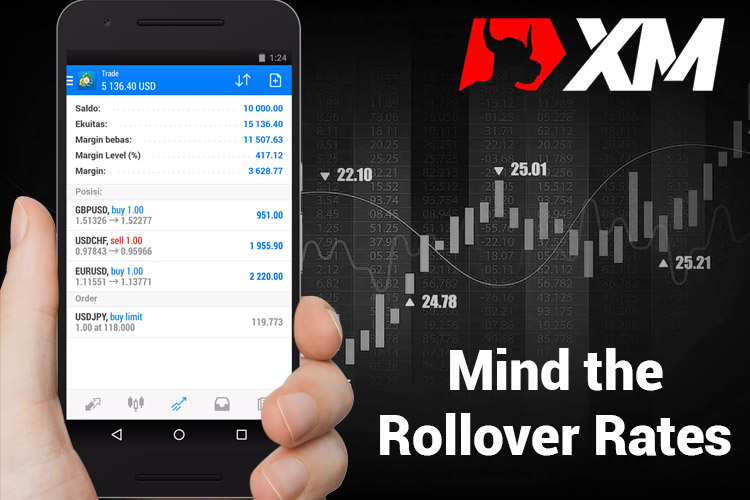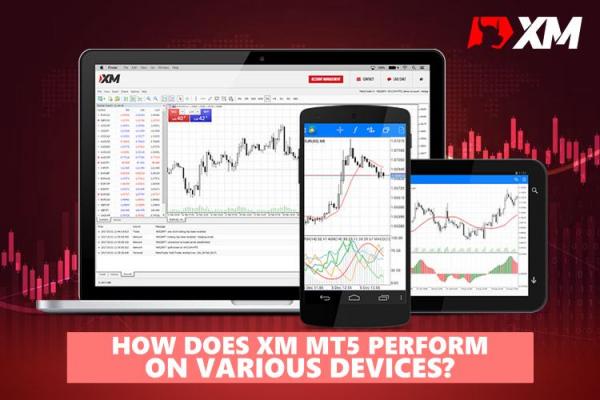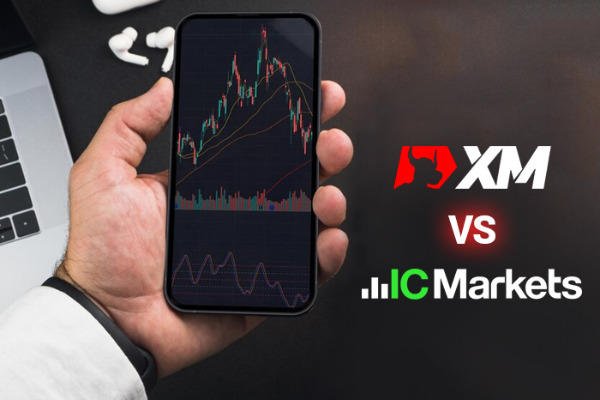Overnight positions can be subject to rollover interest which depends on long or short trades. How do you manage them if you trade with XM?
Overnight positions refer to trades that have not been liquidated or closed at the end of the trading day. This position is very common among swing traders who aim to trade continuously for several days.
XM is one of the popular brokers among both beginners and experienced traders founded in 2009. The platform is growing with more than 5 million international users worldwide. Traders at XM can trade at one of the lowest costs in the industry, access excellent research and education section, and use a beginner-friendly trading app.
If your strategy requires you to hold positions for more than a day, here is an explanation of how to trade overnight positions in XM.

The Essence of Keeping Overnight Positions
As the name suggests, overnight positions refer to trades that start during the day and that you have not closed by the time the trading day ends. Many day traders and scalpers try their best not to have these overnight positions because they have no control over what happens if they are not around. For stocks, an overnight position means that you buy or short a company and continue to hold it after the market closes. Trading positions that traders leave open overnight can trigger rollover interest rates.
See also: Brokers' Swap Comparison
What is a Rollover Rate?
Rollover is the process of extending the delivery date (i.e. the date on which the trade must be completed) of an open position. The currency market allows two trading days for all spot transactions, which means the physical delivery of the currency. However, there is no physical delivery when trading with profit margins, so all open positions must be closed at the end of the day (22:00 GMT on XM platforms) each day and reopened the next trading day. The cost to do such a transaction is called a rollover rate.
The rollover rate is determined through swap contracts, which can either be charged or profited for traders. XM does not close or reopen positions, but only debits or credits trading accounts for positions held overnight, depending on the current interest rate.
Although there is no rollover, if the market is closed on Saturdays and Sundays, the bank still charges interest on open positions over the weekend, only lowered. To accommodate this time difference, XM introduced a 3-day rollover fee on Wednesdays.
How to Calculate Rollover Rates at XM
There are some differences in the calculation of rollover rates charged by XM. This difference in tariffs depends on the position of what trading instrument is left open.
Forex and Spot Metals (Gold and Silver) Rates
Rollover rates charged for forex instruments and spot metal positions are subject to the next-day rate (i.e. tomorrow and the next day), including XM's markup for holding positions overnight. XM broker does not provide conditions for tomorrow's and next-day interest rates, but they are derived from the difference between the interest rates of the two currencies.
For example, if you trade USD/JPY, the rollover rate at tomorrow's and next-day rates will be +0.5% for long positions, and -1.5% for short positions. In this example, it can be known that the US interest rate is higher than that of Japan. You receive +0.5% - XM's markup when a long position of the currency pair is opened overnight. Meanwhile, short positions are calculated to get a minus 1.5% - XM's profit margin.
The calculation of rollover rates for forex and spot metals is as follows:
X transaction size (long/short tom-next rate – XM's Markup)
Keep in mind that plus or minus positions depend on the difference in the exchange rate of two currencies in a given pair.
Stock and Indices' Rates
The rollover rates charged for stock positions and stock indices are determined by the underlying interbank rate of the stock or index (For Australian-listed securities, this will be the interest rate on short-term loans between Australian banks), plus/minus the markup XM has depending on the positions.
For example: Assume you are trading Unilever shares listed in the UK. The interbank short-term interest rate in the UK is 1.5% p.a. The calculation for long positions is -1.5%/365 – XM – XM's daily markup. On the other hand, for short positions, the calculation is 1.5%/365 - XM's daily markup.
The calculation of XM's rollover rate for stocks and stock indices is:
Trade Size x Closing Rate x (long/short position of interbank short-term interest rate – XM's markup
All in all, the start and end of a trading day are considered to be 22:00 GMT in XM. All trading positions that are still open after the time, even if only for 1 minute, will be counted as an overnight position and would be charged a rollover rate.
XM broker is an established international firm and has become a true leader in the trading industry. Founded in 2009, the company works with the main principle of being "fair, trustworthy, and dependable". XM claims to support no re-quotes and real-time execution, where traders can choose from 10+ trading platforms suitable to any device.

 Earn Infinite Loyalty Rewards
Earn Infinite Loyalty Rewards Dedicated FREE FOREX VPS
Dedicated FREE FOREX VPS Free FOREX Virtual Private Server
Free FOREX Virtual Private Server MT4 Demo Contest, Get $500
MT4 Demo Contest, Get $500 Sign Up for an Account, Claim 60% Deposit Bonus
Sign Up for an Account, Claim 60% Deposit Bonus Send E-mail and Get Free Merchandise
Send E-mail and Get Free Merchandise $1K Refer a Friend Bonus for Pepperstone Pro clients
$1K Refer a Friend Bonus for Pepperstone Pro clients








26 Comments
Milanova
Jan 13 2023
Wilson Mendez
Jan 13 2023
Thomas
Jan 13 2023
Johny
Jan 13 2023
Rendy
Jan 27 2023
Johny: I need some more info here, the swap free account looks like you don't have to pay any extra fees but in reality, the swap free turns into other fees like extra spread, extra commissions or even administration fees. As you know, Forex cannot avoid swap rates because all currencies have interest rates. And to make this applicable to all traders, brokers convert the fees into allowed fees like spreads, commissions and others. So, I suggest to read all the term and conditions before open swap-free account.
Ferran Mendi
Jan 13 2023
Juan Liandu
Jan 27 2023
After reading this article, I can assume that to do swing and position trading you need very, very large capital. Okay, not all traders are Muslim and the swap-free account just only for them and if you are charged by swap rate every night your floating loss can be very floating. Remember, Wednesday is the day when you get triple swap rate fees. Dude, that was crazy fees. I'm afraid you'll make less money. I think Forex Trading needs fast execution like scalping and day trading to avoid this swap rate.
Post Covid, I've noticed that swap rates are becoming increasingly important, and it will be difficult to achieve a positive rate. I don't know any other traders but for me, swap rates are heavy.
Robin
Jan 27 2023
Juan Liandu: I agree, to swing trading you need a lot of money, to get maximum profit some swing traders even put 0.1 lot or more which makes that floating loss even bigger. And not forget to mention positioning trader that put 1-2 lot even 5-6 lot and hold it for many months even half year and a year! The swap rate is the problem at all. And I agree, swap rates have become very heavy for traders as there have been almost no positive rates since covid. But honestly, I hope XM trading conditions can also support swing trading, because not everyone here uses short term trading.
Sebastian Aaron
Jan 27 2023
Dude, why does the broker have to charge a free swap? I mean what is the problem? It's not like we're charged for spreads, commissions, even fees like inactivity fees, withdrawal fees. I mean I can afford to trade forex if there are too many hidden fees accumulating in trading. I just want to trade, don't have to pay a lot of money to the broker! And now about swap-rate, how can afford to pay if my trade still floating loss and also i am the type that really don't have much time in trading.
Justin
Jan 27 2023
Sebastian Aaron: I understand your concern about the variety of fees at Forex Trading. The broker is also charged due to the swap rate. Why has swap rates in every forex transaction? First, we choose a currency pair, and the most used currency pair is EUR/USD, right?
We now look at the outlook by country, first in EUR. The euro has a rate called a benchmark interest rate or I called it reference rate, So, just like it names, all rates in the country that use the euro for transactions take this reference rate for lending, bank rates and all rates are based on this reference rate, even when doing transaction with the euro.
Meanwhile, USD also has its own benchmark interest rate. So, because of this, when you trade with Euro to USD or USD to Euro, your price is also calculated with that rate for one day, but if you hold your position until tomorrow, your price must also increase based on tomorrow interest rate. So that's why you get charged by the swap rate every night.
Shakil Ahemed
Apr 12 2023
What are some of the key strategies and considerations that traders should keep in mind when trading overnight positions in XM, including factors such as market volatility, risk management, and the potential impact of news and events on positions, and how can traders effectively balance the potential benefits of holding positions overnight with the potential risks involved in doing so, while also taking into account XM's specific trading rules and guidelines?
Afradi Alam
Apr 12 2023
@Shakil Ahemed:When it comes to trading overnight positions in XM, there are several key strategies and considerations that traders should keep in mind. Here are some of the most important factors to consider:
Market volatility: One of the biggest risks of holding overnight positions is that market volatility can significantly impact the value of a position while a trader is a. Therefore, traders should be aware of the level of volatility in the market and adjust their position sizing and risk management accordingly.
Risk management: It's crucial for traders to have a solid risk management plan in place when trading overnight positions. This includes setting stop-loss orders to limit potential losses and adjusting position sizes based on the amount of risk a trader is willing to take on.
Impact of news and events: Traders should also be aware of the potential impact of news and events on their positions. Major announcements or unexpected events can cause significant market movements, and traders need to be prepared to adjust their positions accordingly.
Balancing potential benefits with potential risks: While holding positions overnight can provide opportunities for traders to capture gains, it's important to balance these potential benefits with the potential risks involved in doing so. This requires a careful assessment of market conditions, risk tolerance, and the trader's overall trading strategy.
XM's specific trading rules and guidelines: Finally, traders need to be aware of XM's specific trading rules and guidelines when trading overnight positions. This includes understanding the rollover fees that may be charged for holding positions overnight and adhering to the broker's margin requirements.
In summary, trading overnight positions in XM requires a careful balance of market analysis, risk management, and adherence to the broker's specific rules and guidelines. By keeping these key strategies and considerations in mind, traders can effectively manage their positions and take advantage of opportunities while minimizing potential risks.
Robby
Apr 21 2023
I have a question about the overnight fees that brokers charge for holding stocks and indices. Frankly, I find it absurd that these fees even exist, given that stocks represent ownership in a company and should not incur any additional swap fees. Similarly, indices are simply groups of stocks that show average values in the market, and I fail to see why holding them overnight should result in any additional charges.
That being said, I'm particularly curious about the reasoning behind the swap fees in trading CFDs (Contracts for Difference) with brokers. Why do these fees exist, especially since the value of CFDs is based on the underlying asset and not on any actual ownership of the stock or index? Is it simply a way for brokers to make extra profits or is there a legitimate reason for these fees? I would greatly appreciate any insights you can provide on this matter. Thank you!
Alexander Wendell
Apr 21 2023
@Robby: In the case of CFDs, while they do not represent ownership in the underlying asset, they do have a similar effect on the trader's account as owning the asset itself. Therefore, brokers may apply swap fees to CFD positions held overnight in order to account for any potential interest rate differentials between the currencies involved in the trade.
While brokers may generate additional profits from these fees, they are a necessary part of the trading process and are applied across the industry. It is important for traders to understand these fees and incorporate them into their overall trading strategy in order to minimize their impact on potential profits.
I hope this information helps to answer your question. If you have any further inquiries, please feel free to ask.
Gary
Apr 21 2023
Hey, what do oyou all think about the overnight position fees. Talking about that, we talka bout the swap fees and not many trader can get the swap free account since the swap fees itself is focusing on the Muslim trader. Beside spread and commissoin, it is also fees to although sometime it can give you some profit.
And as beginner here, I really need to decided my trading style since my first choice, swing trading get this fees, I think I will choose among day trading and scalping to avoid this fees
Lineker
Apr 21 2023
@Gary: overnight position fees, including swap fees, are a common aspect of trading in financial markets. It is worth noting that not all brokers offer swap-free accounts, and those that do often reserve them for clients with specific religious beliefs or for certain types of trading strategies.
While spreads and commissions are typically the primary fees that traders focus on, swap fees can also have a significant impact on profitability, especially for longer-term positions. It is therefore important for traders to be aware of these fees and factor them into their overall trading strategy.
As a beginner, it is wise to consider various trading styles and strategies to determine what works best for you. Day trading and scalping are two styles that may offer a way to avoid or minimize swap fees, but it is important to weigh the potential benefits against the risks and costs associated with these approaches.
Larson
Apr 21 2023
I've recently started swing trading and I've been caught off guard by the triple swap fees that I've had to pay during certain periods. To say that I'm shocked is an understatement - I never expected to see such a significant increase in swap fees, and it's really taken a toll on my profits. I had initially calculated my expected swap fees based on normal market conditions, and the sudden increase in fees has drained my profits more than I had anticipated.
I'm left wondering whether this is a common occurrence in the forex market. It seems ridiculous that swap fees can be charged at such a high rate - up to three times the usual amount - especially given how quickly they can eat into a trader's profits. Have any of you experienced something similar, or do you have any insights on how to minimize the impact of swap fees on your trading performance? I'd really appreciate any thoughts or advice on this matter.
Honka
Apr 21 2023
@Larson: Since triple swap fees are normal. I think you need to focus on strategies that minimize the swap fees. In terms of strategies to minimize the impact of swap fees, one thing to consider is the timing of your trades. Depending on the currency pair and the broker you're using, swap fees may be higher during certain times of the day or week. So, it could be worth doing some research and experimenting with different trade times to see if you can reduce those fees.
Another potential strategy is to look for brokers that offer swap-free accounts, also known as Islamic accounts. These accounts are designed for traders who follow Islamic finance principles that prohibit the payment or receipt of interest, and as such, they typically don't charge swap fees. Of course, not all traders may be interested in or eligible for these types of accounts, but it's worth considering if you're looking to minimize your swap fees. Hope this can clarify your thought!
Roberto
May 15 2023
The article really got me thinking about those swap or rollover fees, especially for swing traders who hold their positions for weeks or even months. It's crazy how those fees can add up over time, right? I mean, if you have a trade open for just one day, you get charged once, but if you hold it longer, the fees gradually increase based on how long you keep the position.
As far as I know, the rollover fees are derived from the benchmark rates that apply to the currencies involved in the trade. These rates reflect the interest rate differentials between the currencies, which is why they play a role in determining the rollover fees.
But here's the interesting part: why do rollover rates, which are typically based on interest rate differentials, apply not only to forex instruments but also to spot metal positions? It's a bit puzzling considering that metals like gold and silver don't have benchmark interest rates like currencies do.
Qony
May 23 2023
@Roberto: That's an interesting question! Rollover rates, which are commonly based on interest rate differentials, apply not only to forex instruments but also to spot metal positions. While metals like gold and silver don't have benchmark interest rates like currencies, there are a few factors to consider.
In the case of spot metal positions, rollover rates are determined by factors beyond interest rate differentials. These rates may take into account various market conditions specific to the metal market, such as storage costs, market liquidity, supply and demand dynamics, and other related factors.
Although metals don't have interest rates in the traditional sense, the cost associated with holding physical metal positions in the market can still be factored into the rollover rates. This cost reflects the opportunity cost of tying up capital in the metal, as well as considerations like storage and insurance expenses.
Bale
May 24 2023
Dude, I just have a simple question here. Is swap a real burden for traders? I mean, if you're a Muslim, you can choose a free swap account and completely avoid swap charges in your trading. But for non-Muslim traders, most brokers don't offer free swap accounts, so they have no choice but to pay the swaps.
By the way, the article mentioned a guide to trading overnight positions and taking advantage of positive swaps. But for beginners, I think it can be really challenging. I mean, trading itself is hard enough, and adding swaps into the mix can just make things more confusing, you know?
Soliano
Jul 1 2023
@Bale: Hey, dude! I totally get where you're coming from. Swaps can be a bit of a tricky thing to wrap your head around, especially when it comes to the financial implications for traders.
For Muslim traders, the concept of swap charges conflicts with their religious beliefs, which is why many brokers offer free swap accounts to accommodate their needs. It's definitely a perk for them to avoid those swap charges and align their trading with their faith.
But for non-Muslim traders, it's a different story. Most brokers don't provide free swap accounts, so they're stuck with paying the swaps. And yeah, it can feel like an extra burden on top of the already challenging task of trading.
The article mentioned a guide on trading overnight positions and leveraging positive swaps. While it can be tempting to take advantage of those positive swaps, it's important to remember that it's not an easy feat, especially for beginners. Trading itself requires a lot of knowledge and skill, and adding swaps into the mix can add another layer of complexity.
Gutts
Jul 4 2023
Hey, I was reading about XM's trading terms and came across the mention of a three-day rollover fee on Wednesdays. I'm curious to know more about how this works. Could you explain why XM has a three-day rollover and how it affects traders who hold positions over the weekend? How does this help in aligning interest charges and ensuring fairness in the trading process? I'd appreciate some insights on the significance of the three-day rollover and how it impacts traders' overall trading experience. Thanks
Theo
Jul 5 2023
@Gutts: Ah, I see you've come across XM's three-day rollover fee on Wednesdays. Let me break it down for you. The purpose of this rollover fee is to ensure fair interest charges and keep things in check when it comes to trading.
Here's how it works: Rollover is when you extend the settlement date of an open position to the next trading day. Normally, trades settle within two business days. But since the forex market operates continuously from Monday to Friday, holding positions over the weekend means you're accumulating extra days of interest.
To make it fair and square, XM implements a three-day rollover on Wednesdays. So, if you're holding a position from Wednesday to Thursday, the rollover fee will account for three days of interest instead of the usual two. This way, they ensure that interest charges align with the extended non-trading period over the weekend.
By having this three-day rollover, XM aims to give traders a balanced structure for interest charges throughout the trading week.
Gordon
Nov 27 2023
Hey, things are getting pretty interesting around here. So, XM broker has this cool feature where you can trade stocks directly. Now, diving into the stocks game on XM, I've got a question about the swap fee during trading. The article mentions that the rollover rates for stock positions and indices depend on the interbank rate of the stock or index. Now, correct me if I'm wrong, but when we normally invest in stocks (non-CFD), there aren't any swap fees involved. So, what's the deal with stocks in CFD trading having swap fees tied to their rates? Is it XM marking things up, or is it some kind of regulation thing in play? Curious to know the scoop on this. Thanks!
Cherre
Nov 30 2023
The deal with the swap fees being tied to the rates of stocks and indices is not some XM markup, and it's not a random choice either. It boils down to the underlying interbank rate of the specific stock or index you're trading. To be noted that Contracts for Difference (CFD) typically involve swap fees because of the nature of the financial instruments and the structure of CFD trading.
Now, you're spot on about non-CFD stock investments typically not having swap fees. In CFD trading, though, the game is a bit different. The swap fees come into play as a result of the interbank rate fluctuations, and XM is just reflecting that reality in their rollover rates. It's not about XM trying to sneak in extra charges; it's more about aligning with the market dynamics.
So, no hidden agenda from XM – it's all about staying in sync with the interbank vibes. If you've got more queries, feel free to shoot them my way! Cheers!